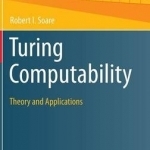Turing Computability: Theory and Applications: 2016
BookThis item doesn’t have any media yet
2016 | Computing & IT
Turing's famous 1936 paper introduced a formal definition of a computing machine, a Turing machine. This model led to both the development of actual computers and to computability theory, the study of what machines can and cannot compute. This book presents classical computability theory from Turing and Post to current results and methods, and their use in studying the information content of algebraic structures, models, and their relation to Peano arithmetic. The author presents the subject as an art to be practiced, and an art in the aesthetic sense of inherent beauty which all mathematicians recognize in their subject. Part I gives a thorough development of the foundations of computability, from the definition of Turing machines up to finite injury priority arguments. Key topics include relative computability, and computably enumerable sets, those which can be effectively listed but not necessarily effectively decided, such as the theorems of Peano arithmetic. Part II includes the study of computably open and closed sets of reals and basis and nonbasis theorems for effectively closed sets. Part III covers minimal Turing degrees.
Part IV is an introduction to games and their use in proving theorems. Finally, Part V offers a short history of computability theory. The author has honed the content over decades according to feedback from students, lecturers, and researchers around the world. Most chapters include exercises, and the material is carefully structured according to importance and difficulty. The book is suitable for advanced undergraduate and graduate students in computer science and mathematics and researchers engaged with computability and mathematical logic.
Related Items:
| Published by | Springer-Verlag Berlin and Heidelberg GmbH & Co. KG |
| Edition | Unknown |
| ISBN | 9783642319327 |
| Language | N/A |
Images And Data Courtesy Of: Springer-Verlag Berlin and Heidelberg GmbH & Co. KG.
This content (including text, images, videos and other media) is published and used in accordance
with Fair Use.
